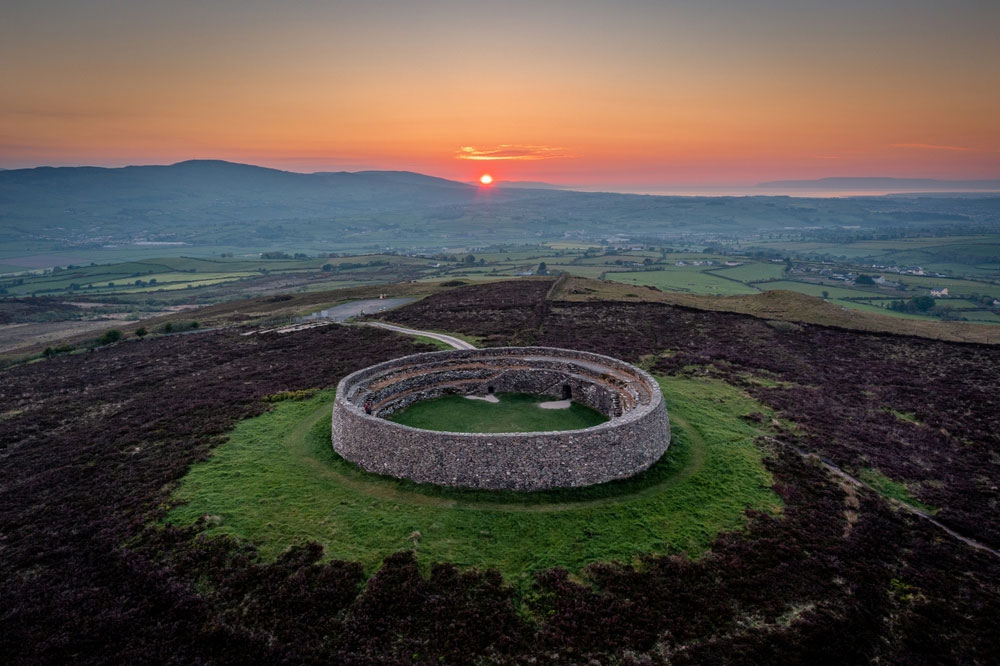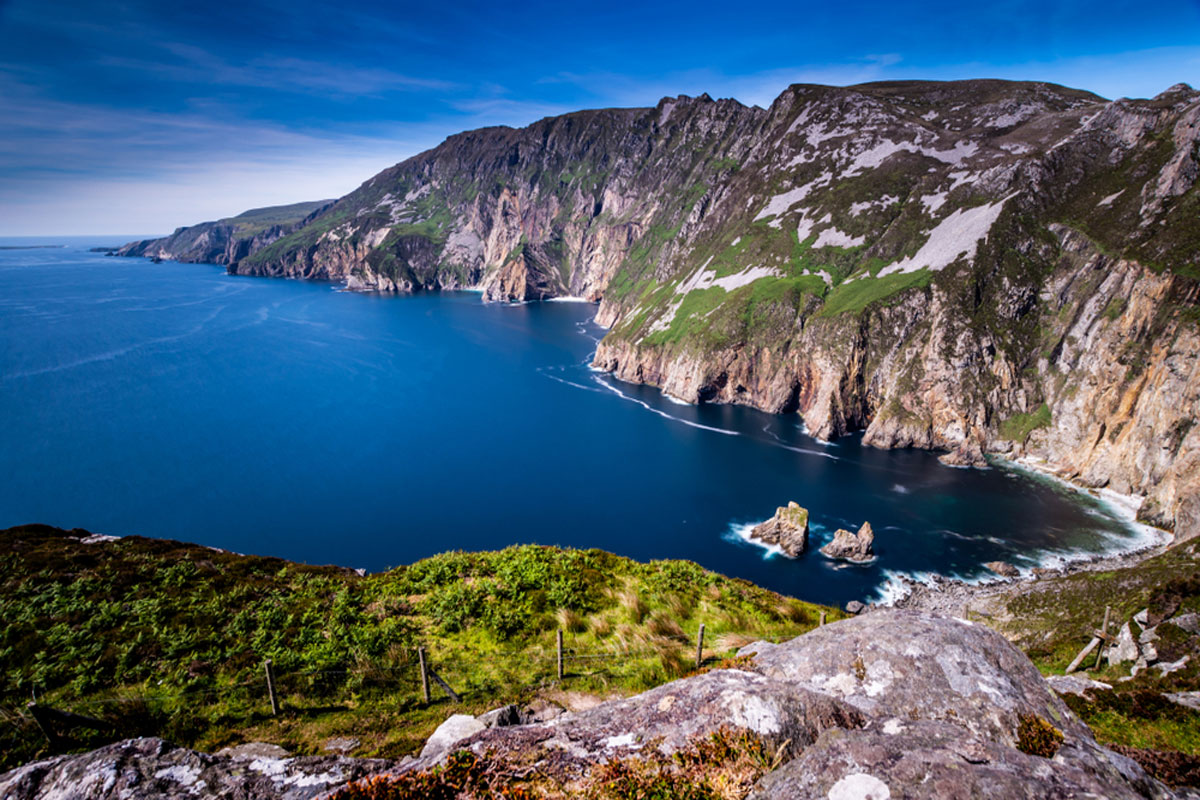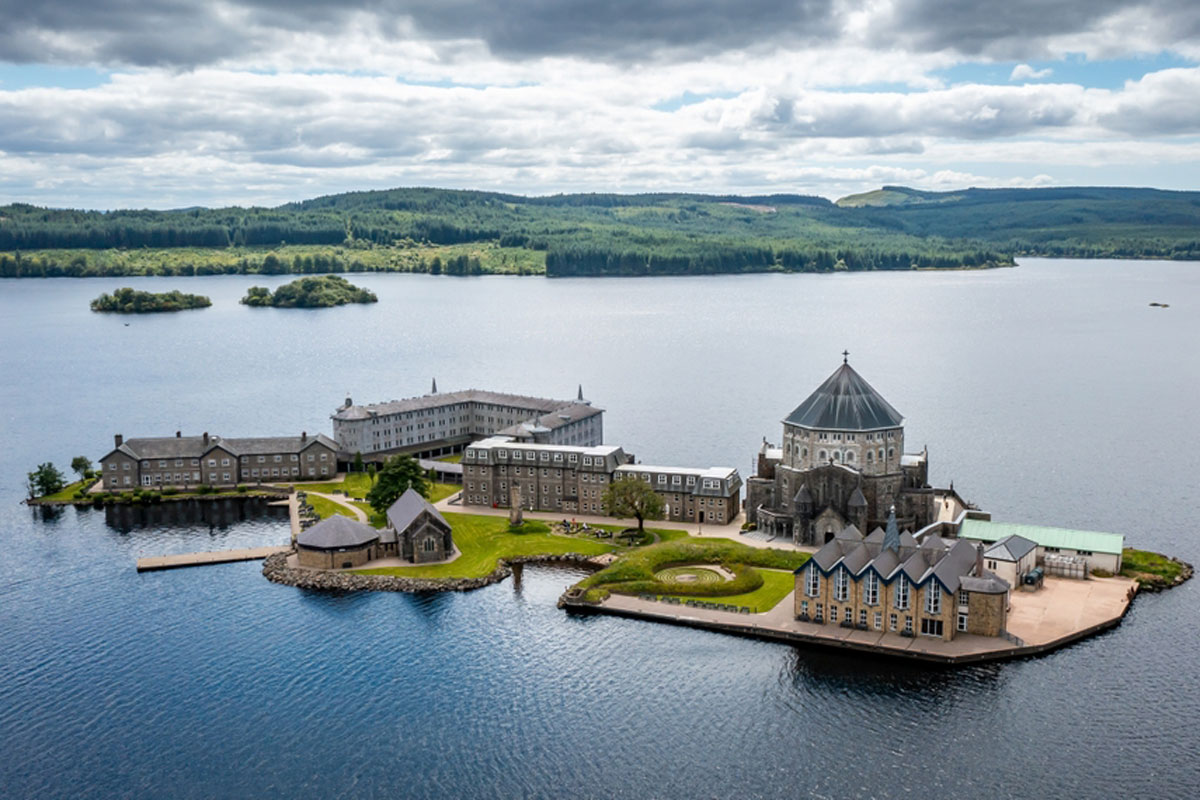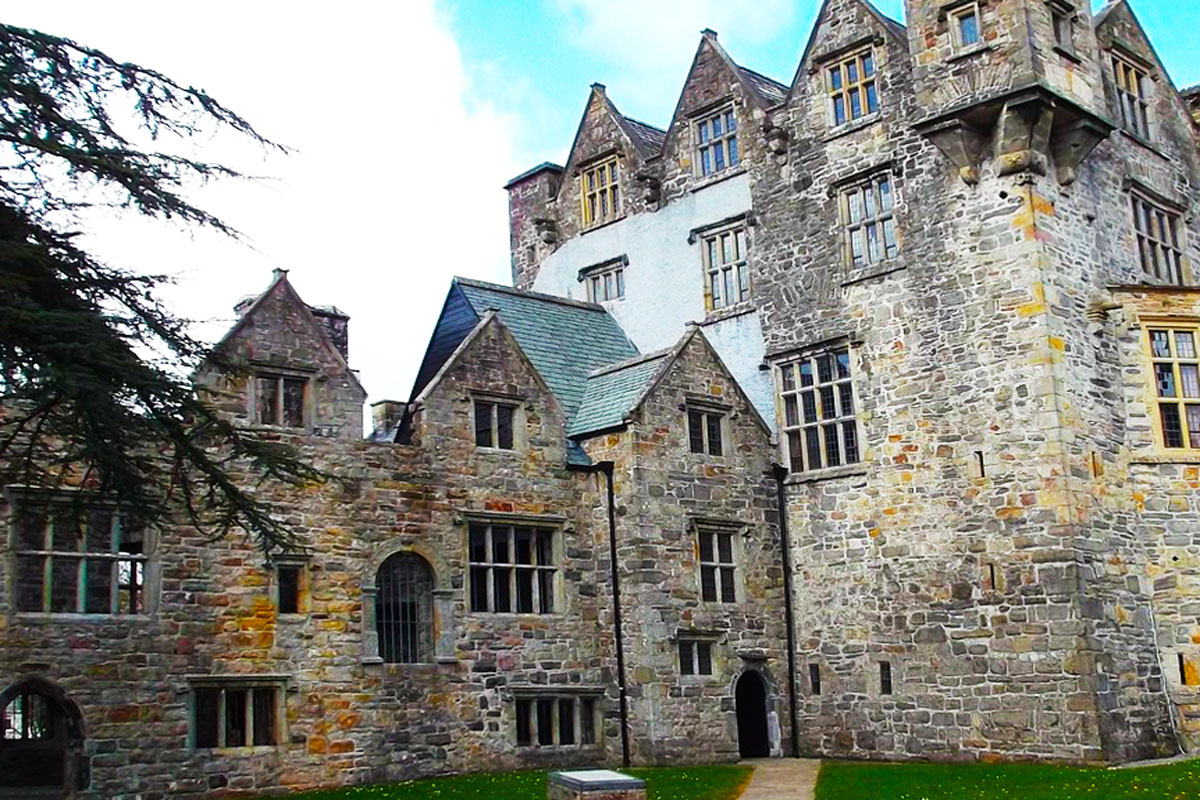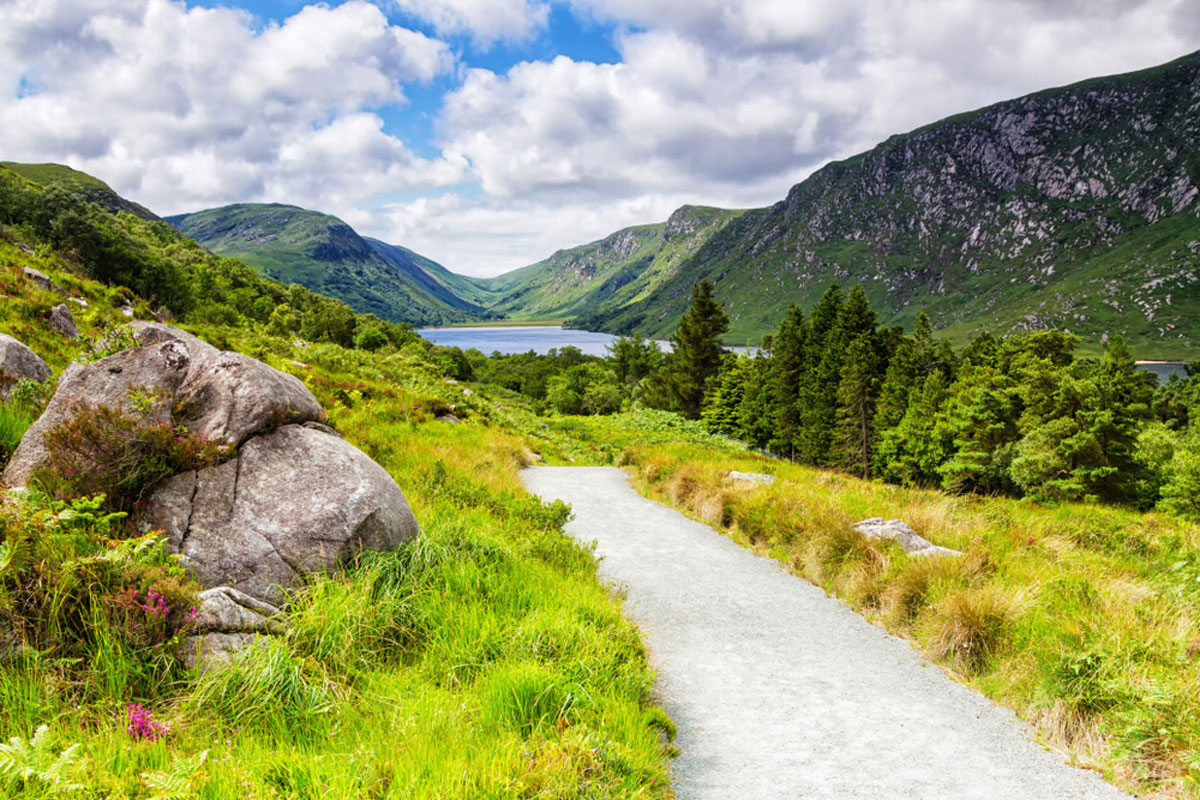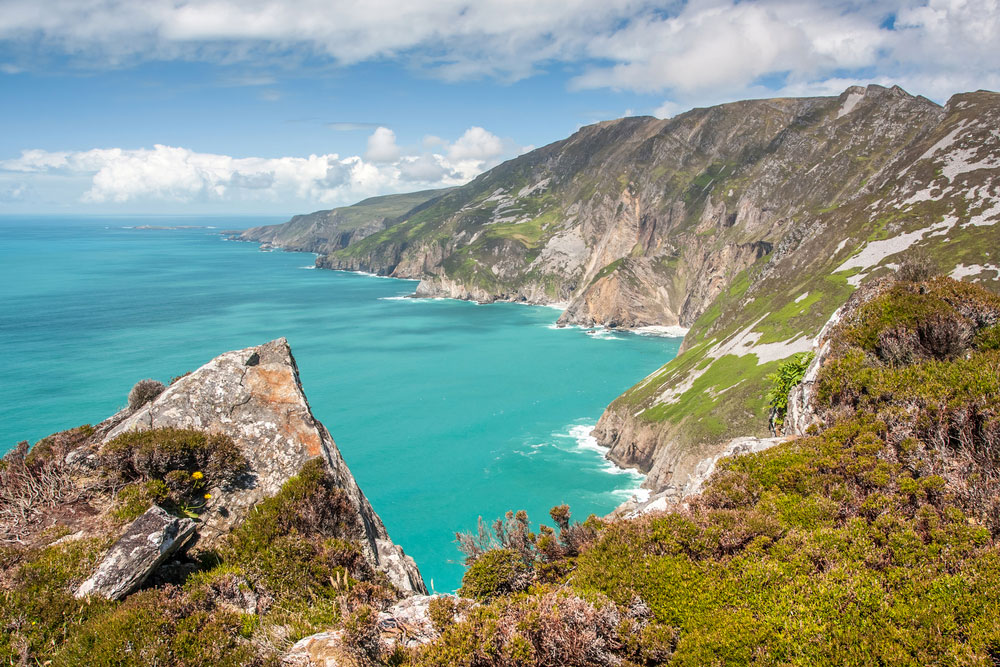Donegal’s Ancient Sentinel
A sentinel of time, a memorial to a bygone period, stands in the northern regions of County Donegal, where the craggy hills appear to touch the very heavens. The Grianan of Aileach, with its worn stones and dominating presence, bears witness to this land’s rich history and continuing vitality.
One can’t help but feel wonder as one approaches this old ringfort located atop the 244-meter-high Greenan Mountain. Its circular walls, which rise sharply from the hill and appear to defy gravity, enclose a richness of stories and traditions dating back a thousand years.
The name “Grianan of Aileach” comes from the Irish “Grianán Ailigh,” which means “Stone Palace of the Sun.” This name, cloaked in myth and mystery, spoke to the importance of this location in the lives of those who created and occupied there. The far hills, rolling plains, and expanse of Lough Swilly can all be seen from the mountaintop, making it simple to understand why this was such an important spot.
Join us on this excursion to see the Grianan of Aileach, a magnificent stone ringfort with a history as rich and intriguing as the Irish landscape it adorns.
Ancient Origins
The Grianan of Aileach is more than a stone ringfort; it’s a time machine that transfers you to Ireland’s prehistoric past. To really understand its significance, we must dig into history.
This hillfort dates from the first millennium AD, although the hill itself has a much earlier narrative. Some say it was an ancient burial site—a hallowed location with mystical ties to the Celts. It evolved from a pagan fort to an emblem of Gaelic dominance over the years.
The current edifice is assumed to have been built in the sixth or seventh centuries, under the reign of the U Néill dynasty, one of Ireland’s most powerful early medieval families. This dynastic connection lends another dimension of historical relevance to the fort.
The walls of the ringfort, created with precision and robust dry-stone construction, are a tribute to the builders’ expertise. They’re made out of jigsaw puzzle-like stones, each one specially designed to connect flawlessly. Some believe the craftsmanship is so impressive that it’s a marvel in and of itself, and it’s difficult to disagree.
As the sun sets over the Irish countryside surrounding the Grianan, it shines a warm, golden glow on the ancient stones, bringing new life to the timeworn relics of history. The panoramic perspective from this vantage point adds to the charm of the Grianan, capturing a glimpse of the changing times it has witnessed.
As you stand within this ringfort and trail your fingertips down the rough-hewn walls, you’re touching a chapter of Ireland’s history that’s inextricably linked to the land’s old soul.
Legends and myths
The Grianan of Aileach is more than just a stone building; it’s a treasure trove of myths, legends, and stories woven into the fabric of Irish history. As you pass past the ringfort’s walls, you enter a realm where the line between fact and folklore blurs.
One of the most intriguing stories revolves around the name “Grianan of Aileach.” The name “Grianan” is said to be derived from the Irish word “grian,” which means “sun.” Some believe the fort was built to worship the sun, which would explain its alignment with the rising and setting sun at the equinoxes.
However, if you ask a local, you may get a different narrative. They might tell you that the sun, not the people, erected the Grianan. According to folklore, a peasant woman fell asleep beside the fort after being left at home with her newborn while her husband worked in the fields. When she awoke, she was inside the finished structure, which was supposed to be erected by the sun itself.
Legends like this have woven the Grianan into the tapestry of Irish tradition, imbuing it with a feeling of magic and wonder. Speaking of magic, it’s also said to be a gathering area for fairies and supernatural happenings. Locals still tell stories of hearing fairy music and seeing fairy dances in the moonlit courtyard.
A place steeped in history and mystery is certain to have its own ghost stories. One such myth involves the ghost of a woman clad in white seen drifting across the ruins. She is claimed to be the spirit of a lady who died there, and her presence contributes to the eerie ambiance of the fort.
The Grianan of Aileach is a link between reality and the supernatural, connecting the past and the present. The tales that envelop it, like the mists that frequently hug its walls, create a sense of timelessness.
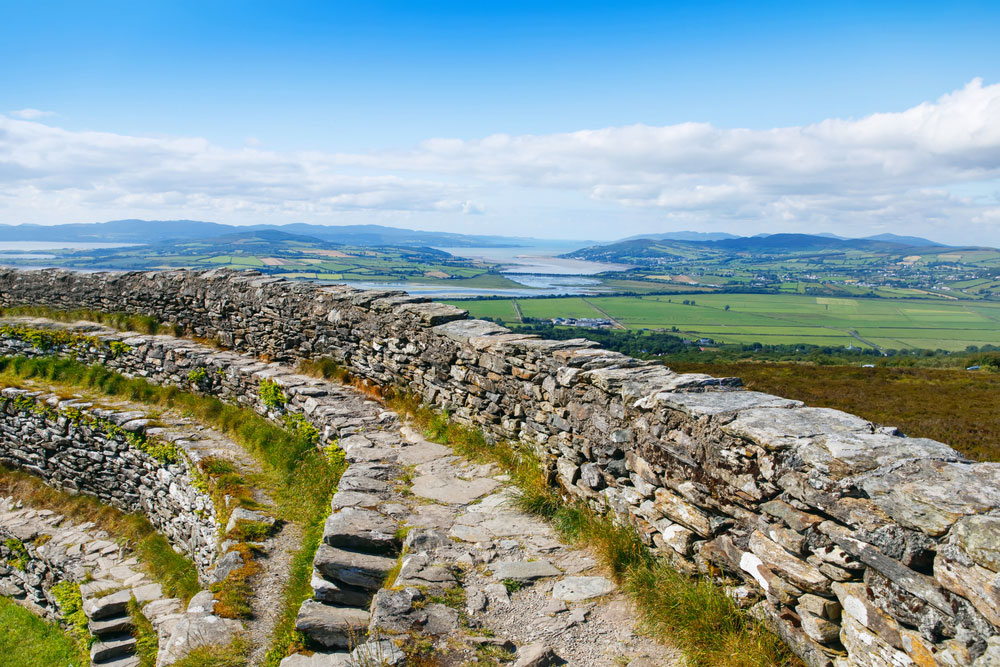
Visiting the Grianan
You might be excited to visit the Grianan of Aileach now that you’ve learned about its history, panoramic vistas, myths, and tales. We’ll tell you what to expect when you arrive.
Getting There:
The Grianan of Aileach lies near the town of Burt in County Donegal. It is approximately a three and a half to four-hour trip from Dublin. It’s a shorter drive from Derry, perhaps 20-30 minutes. Keep in mind that the roads can become narrow and winding as you approach the site.
Parking:
There is a tiny parking lot just next to the Grianan. It might get crowded, especially during the summer months, so try to get there early.
Admission:
The best part is that there is no admission cost. You may stroll right in, explore the fort, and take in the spectacular views for free.
Exploring the Fort:
When you step through the gate of the Grianan, you’re stepping into history. The structure itself is impressive. The walls are tall and thick, and you can see the remnants of the internal steps that once led to a wooden platform. As you ascend these steps, you’ll feel like you’re climbing back in time. At the top, you’ll be treated to 360-degree views that stretch for miles, with Lough Swilly, Lough Foyle, and the hills of Derry in the distance. It’s a picture-perfect scene.
What to Bring:
Wear comfortable walking shoes, as the ground can be uneven. Be sure to bring your camera or smartphone to capture the stunning views. And, of course, don’t forget to bring a sense of wonder and curiosity.
Best Time to Visit:
The Grianan is worth seeing at any time of year, but the views are especially beautiful at sunset and sunrise. The mysterious nature of the location appears to increase as the light changes.
Local Tips:
Chat with the locals, as they may have additional stories, insights, or advice about the Grianan. And if you’re a fan of history and mystery, consider visiting the nearby Doon Well. This ancient well is said to have healing properties and its own set of folklore.
The Grianan of Aileach is a place where the past dances with the present, where history meets myth, and where you can stand in awe of the breathtaking landscapes that Ireland is renowned for. It’s a site that offers a profound connection to this ancient land, and a visit here is an experience you won’t soon forget.
Grianan of Aileach’s Mysteries and Magic
As your visit to the Grianan of Aileach comes to a close, you may find yourself musing on the enchantment and mystery of this extraordinary site. This ancient stone ringfort is more than just a historical relic or a beautiful overlook; it’s a living link to Ireland’s past, a place where stories and legends echo down the decades.
You’ve walked in the footsteps of chieftains and kings, touched stones that have been weathered by countless years, and stared out over a landscape that has seen the ebb and flow of history. The sensation of infinity is palpable, and you can’t help but wonder what has happened behind these walls.
Grianan of Aileach is more than just an archaeological site; it’s a testament to the enduring power of history and myth in Ireland. The legends of the Tuatha Dé Danann, the stories of warrior chieftains, and the many generations who have sought shelter within these walls are all part of its rich tapestry.
You can feel a powerful sense of connection with Ireland’s past as you stand atop this ancient hill, the wind whispering stories in your ear. It’s as if the land itself is revealing its secrets to you. The lines between the past and the present blur here, and you are taken back in time for a little while.
It’s a place to explore life’s big questions, feel Ireland’s heartbeat, and marvel at the beauty and mystery of this ancient land. Whether you visit in the bright sunshine or under a cloudy sky, the Grianan of Aileach will leave an unforgettable imprint on your soul.
Remember that the romance and mystery of Ireland’s past are always there, waiting to be discovered by those who seek them as you make your way back down from the hillfort, with the panoramic views and stone walls behind you. Grianan of Aileach is a tribute to Ireland’s enduring heritage, as well as an experience that will linger long after you’ve left its ancient embrace.
Natural Attractions
- Slieve League Cliffs – Among the highest sea cliffs in Europe, offering breathtaking views of the Atlantic Ocean.
- Glenveagh National Park – A stunning park with rugged mountains, pristine lakes, and the enchanting Glenveagh Castle.
- Malin Head – Ireland’s northernmost point, known for its dramatic coastal scenery and wildlife.
- Fanad Head Lighthouse – A picturesque lighthouse located on a scenic peninsula.
- Blue Stack Mountains – Perfect for hikers seeking challenging trails and spectacular vistas.
- Ards Forest Park – A tranquil forest park with sandy beaches, walking trails, and picnic spots.
Historical and Cultural Sites
- Donegal Castle – A beautifully restored 15th-century castle in the heart of Donegal Town.
- Grianán of Aileach – A hilltop stone fort offering panoramic views and a glimpse into ancient Irish history.
- Glencolmcille Folk Village – A living history museum depicting traditional Irish rural life.
- Doe Castle – A well-preserved castle with stunning views over Sheephaven Bay.
- Famine Memorial – A poignant tribute to those who suffered during the Great Famine.
Lakes and Water Activities
- Lough Eske – A serene lake surrounded by woodlands, ideal for fishing and kayaking.
- Lough Finn – Known for its trout fishing and scenic setting.
- River Finn – Popular for salmon fishing and riverside walks.
- Ballymastocker Bay – A Blue Flag beach perfect for swimming and relaxing.
Scenic Drives and Villages
- Atlantic Drive – A scenic coastal route showcasing Donegal’s rugged beauty.
- Inishowen Peninsula – A loop drive featuring stunning beaches, historic sites, and charming villages.
- Dungloe – Known for its traditional music and the Mary from Dungloe Festival.
- Ardara – Famous for its tweed-making heritage and friendly atmosphere.
Unique Experiences
- Tory Island – A remote island rich in folklore, accessible by ferry.
- Wild Atlantic Way – Explore Donegal’s section of this iconic coastal route.
- Donegal Craft Village – A hub for local artists and craftspeople creating traditional and modern pieces.
- Surfing at Bundoran – Known as Ireland’s surf capital, offering waves for all skill levels.
- Festivals and Events – Enjoy lively events such as the Donegal Bay and Bluestacks Festival and Earagail Arts Festival.
County Donegal offers a mix of dramatic landscapes, rich cultural heritage, and warm hospitality, making it a must-visit destination in Ireland.
Helpful Resources




